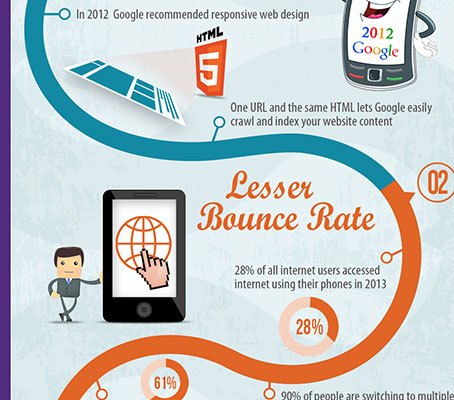Eager To Uncover Exactly How Website Style Has Transformed Over Time? Dive Into The Development From Simplicity To User-Focused Experiences
Eager To Uncover Exactly How Website Style Has Transformed Over Time? Dive Into The Development From Simplicity To User-Focused Experiences
Blog Article
Content Composed By-Thorsen Bojesen
In the past, websites were simple and focused on details. Navigation was direct, and design was for desktops. Currently, user experience is key. Data overviews styles for easy navigation. Responsive layouts fit different tools. Today, dark setting lowers pressure, and minimalist food selections boost navigating. Interactive functions engage users, and bold visuals attract attention. AI integration increases interaction. See just how layout has actually evolved to boost your online journey.
Early Days of Web Design
In the very early days of website design, simpleness reigned supreme. Web sites were standard, with restricted shades, fonts, and layouts. The emphasis was on providing information rather than flashy visuals. Customers accessed the internet with slow dial-up connections, so speed and capability were key.
Navigation food selections were straightforward, usually located at the top or side of the web page. Web sites were developed for computer, as mobile browsing wasn't yet widespread. Web content was king, and developers focused on simple readability over intricate design elements.
HTML was the key coding language utilized, and designers needed to function within its restrictions. Computer animations and interactive attributes were very little contrasted to today's criteria. Sites were static, with little dynamic content or tailored customer experiences.
Surge of User-Focused Style
With the advancement of site layout, a change in the direction of user-focused layout concepts has ended up being significantly noticeable. Today, developing internet sites that focus on user experience is important for engaging site visitors and achieving company goals. User-focused layout entails understanding the demands, choices, and actions of your target audience to customize the web site's design, material, and includes as necessary.
Developers currently conduct comprehensive study, such as customer surveys and use screening, to gather insights and comments straight from users. This data-driven strategy assists in creating intuitive navigating, clear calls-to-action, and visually appealing interfaces that reverberate with visitors. By positioning the customer at the center of the layout procedure, web sites can provide an extra individualized and pleasurable experience.
Responsive design has actually also become an essential facet of user-focused layout, making sure that internet sites are optimized for various devices and display sizes. This flexibility enhances accessibility and use, satisfying the varied means customers communicate with web sites today. Fundamentally, the increase of user-focused layout symbolizes a change towards developing digital experiences that focus on the demands and expectations of the end customer.
Modern Trends in Web Design
Explore the most up to date trends forming website design today. One popular fad is dark setting design, providing a streamlined and modern appearance while minimizing eye strain in low-light atmospheres. An additional key trend is minimalist navigating, streamlining menus and enhancing customer experience by concentrating on essential elements. Integrating micro-interactions, such as animated switches or scrolling results, can develop a more interesting and interactive internet site. Receptive design stays crucial, ensuring smooth individual experiences across numerous gadgets. Furthermore, using strong typography and unbalanced designs can add visual interest and accentuate particular material.
Integrating AI innovation, like chatbots for client assistance or individualized referrals, boosts individual involvement and streamlines processes. Access has likewise come to be a substantial pattern, with designers focusing on comprehensive design techniques to accommodate diverse individual requirements. Accepting sustainability by maximizing web site efficiency for rate and performance is another emerging pattern in website design. Teaming up with user comments and information analytics to repeat and improve design constantly is crucial for remaining relevant in the ever-evolving electronic landscape. By accepting https://www.google.com/maps/place/Moon+and+Owl+Marketing/@32.9757271,-106.5344695,1840583m/data=!3m1!1e3!4m6!3m5!1s0x864ddeaa4179705b:0x488d41d2cc6b9750!8m2!3d32.9757271!4d-97.5696258!16s%2Fg%2F11b6mpccrg?entry=ttu&g_ep=EgoyMDI1MDIxMS4wIKXMDSoJLDEwMjExNDUzSAFQAw%3D%3D -day patterns, you can develop an aesthetically enticing, easy to use web site that reverberates with your target market.
Verdict
As you assess the advancement of web site style from the early days to currently, you can see how user-focused style has come to be the driving pressure behind contemporary trends.
Welcome the trip of change and adaptation in web design, constantly maintaining the user experience at the forefront.
Remain present with the latest fads and innovations, and never ever stop evolving your method to develop aesthetically sensational and user-friendly internet sites.
Evolve, adapt, and create - the future of website design remains in your hands.
